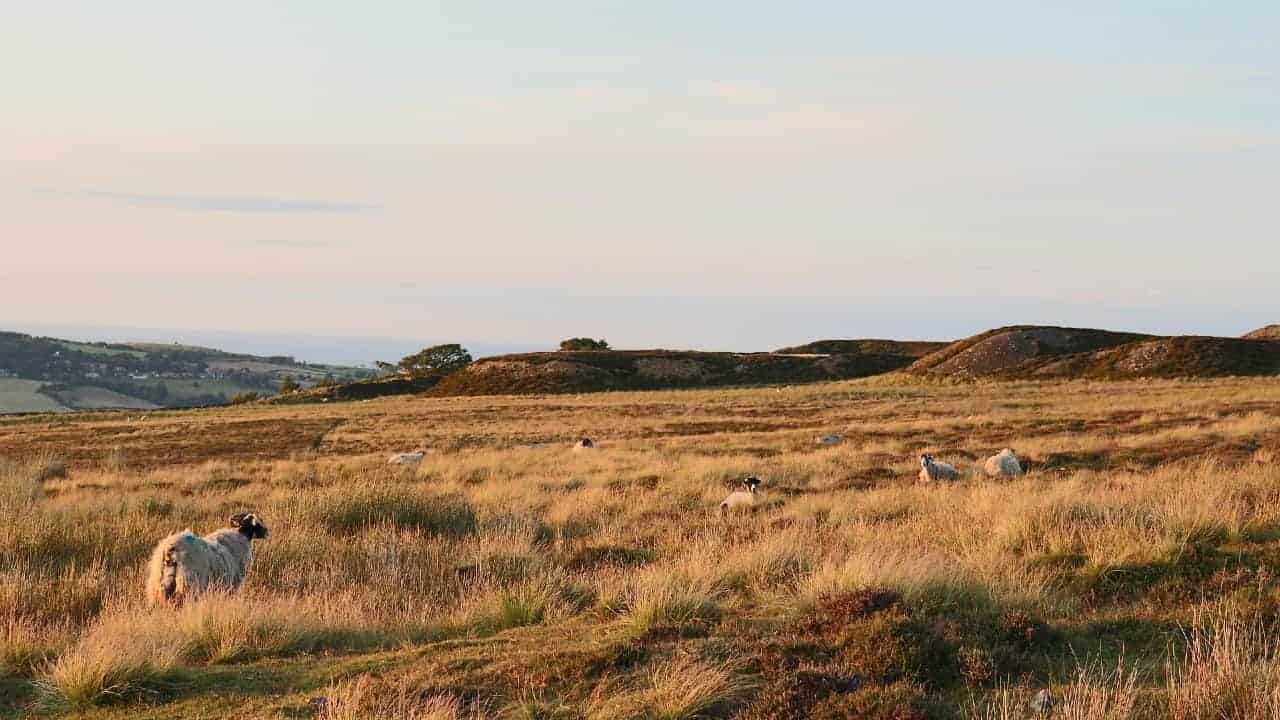One of England’s shorter National Trails, this is a perfect walk for ramblers seeking a challenge without too much length. At 175km, it’s still a mighty task, but it’s a lot shorter than some other National Trail options. It skirts almost the entirety of the North Yorkshire Moors National Park, with a horseshoe-shaped trail.
The route takes walkers from the pretty inland market town of Helmsley all the way to Filey, a seaside settlement on the dramatic north east coast. The trail offers the beauty of heathery National Park moorlands along with staggering coastal views. A perfectly-balanced trek of differing landscapes, the trail is almost evenly split between rolling inland hills and seaside scenes.
The route brings walkers into contact with coastal towns, fishing villages, barren moors and significant historical sites, including Rievaulx Abbey, Mount Grace Priory and Scarborough Castle.
The walk also gives trekkers a real slice of what makes the north east of England so great – remote countryside, beautiful coastlines and friendly faces.
It’s also not too challenging of a trek. Though it has a few tricky ascents, there’s nothing too difficult for anyone who isn’t fairly fit.
It’s beautiful, it’s varied and it’s not too tough – it’s the Cleveland Way!
Which Way Should I Walk – Clockwise or Anticlockwise?
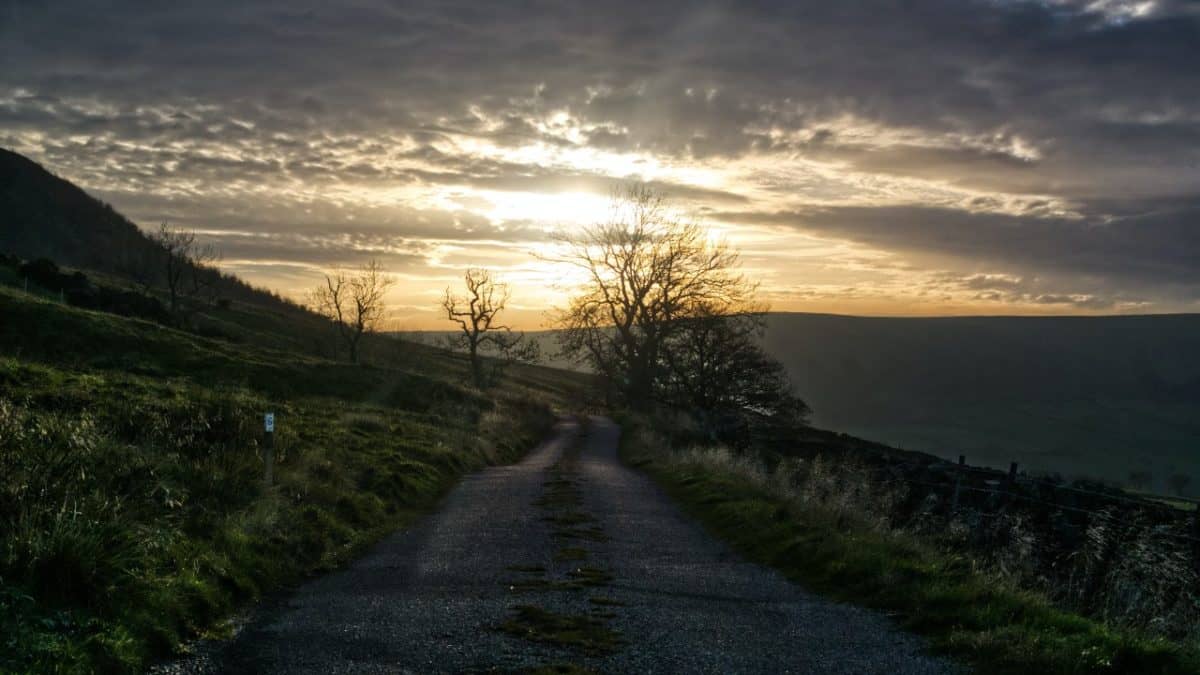
Most people walk The Cleveland Way in a clockwise direction, from west to east. If you walk this direction, you’ll usually have the prevailing wind at your back, which means you won’t be walking into the wind – and you won’t have to face the brunt of any bad weather!
That said, there’s no real one true way to walk this path. It depends on what you prefer: do you want the second half of your jaunt to be along the coast? Or would you prefer to finish your walk in the moors?
With some other walks, winds and weather dictate the way you should walk. Here, that’s not a huge concern. Have a think about the landscapes you’ll pass through, and use that to inform your choice.
Where Will The Cleveland Way Take Me?
Assuming you walk west to east (clockwise!), here’s what you’ll experience…
Perhaps the most beautiful start to any of the National Trails, the market town of Helmsley soon gives way to the more barren stretches of the western perimeter of the North Yorkshire Moors National Park. With many small famous peaks, endless heather and quiet stretches of moorland, this is a north Yorkshire in a nutshell.
This section is also replete with creatures and critters – there’s plenty of wildlife along with many farm animals.
When the moors make way to cliffs and coast, the views change, as crashing waves replace greenery and grass. This stretch offers the highest sea cliffs on the east coast of England, the highest point rising to 203 metres. The north eastern coastline is a vastly underrated part of England’s landscape, and this way is a great way to get the best of it. If you’ve never before experienced the coast in this part of the world, you’ll be surprised by how beautiful it really is.
Why Should I Do The Cleveland Way?
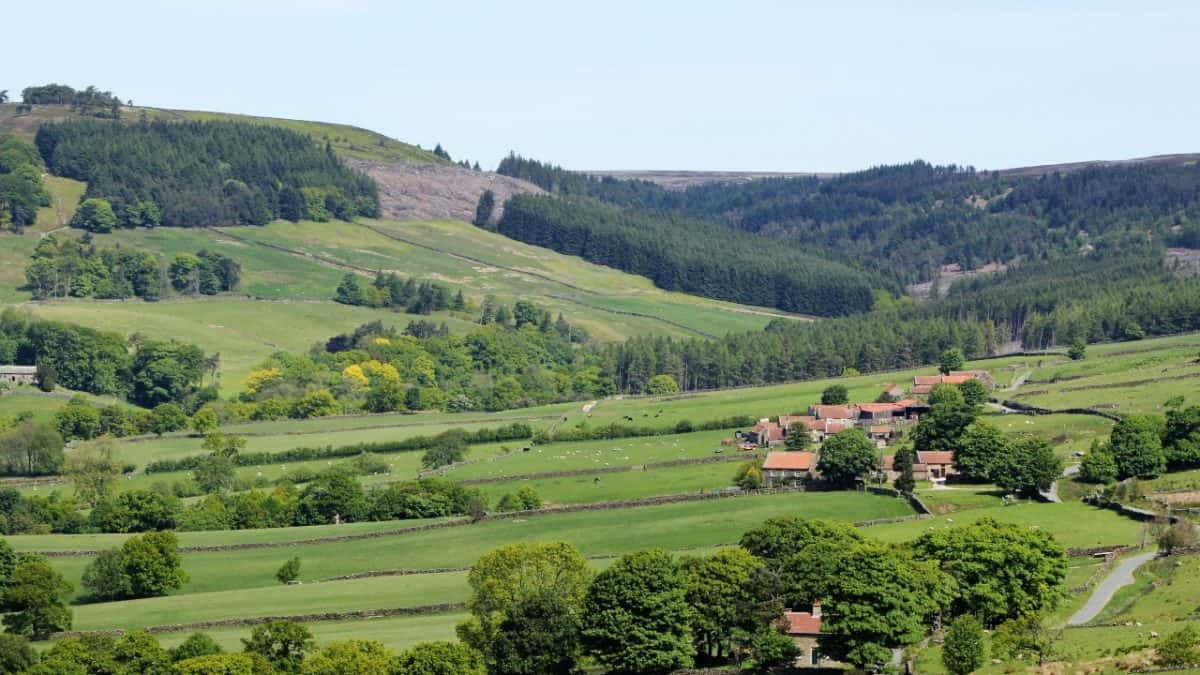
There are many reasons!
- Views. With lots of varied landscapes, there are a huge amount of views on offer here. Coastal waves, rolling hills and peak-top panoramas, the Cleveland Way offers plenty of diversity. Considering that this walk is relatively unchallenging, the variety of views is a huge surprise for many who tackle the trek!
- For the challenge. Yes, this isn’t the longest of The National Trails, and the length and terrain make for a walk that’s doable for most. But make no mistake, 175km is still a lengthy challenge. Even if you think you’re ready for this one, it still deserves respect.
- It’s a great way to get healthy and active. Hiking is great for your body and mind!
- To join a community of other hikers, ramblers and trekkers. Along the way, you’ll meet many other people hitting the walk. Many of these people will be locals from the surrounding area – and people from this part of the world are famously friendly. You’re bound to encounter plenty of smiling faces.
- For the many famous sites and scenes across the way. There are plenty!
What Are Some Of These Sites?
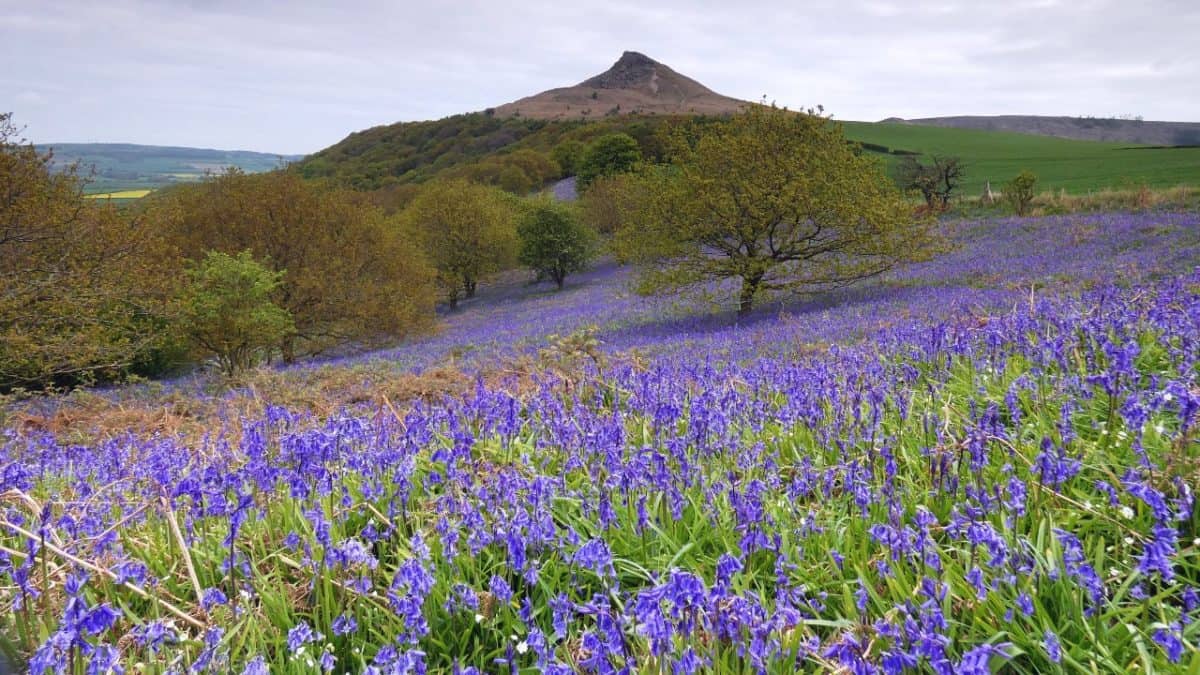
Again, assuming you walk east to west…
- Helmsley! A truly enchanting market town, it’s the only of its type in the entire North Yorkshire Moors National Park. All exposed brickwork and charming architecture, it’s a real slice of traditional northern life. It’s also the home of Helmsley Castle, which is absolutely worth a visit. If you like quaint, you’ll love this. The historic walk from here to Rievaulx Abbey is gorgeous in itself, a perfect sample of what’s to come over your next few days. And as a bonus, the Abbey is great too! What a way to kick off.
- Sutton Bank: another (literal) high point near the beginning of the walk, the 298 metre peak of Sutton Bank offers fantastic panoramas of the national park’s western side. Novelist James Herriot, who lived nearby, called this view “the finest in England”. He might have been a bit biased, but it’s certainly a contender.
- The Wainstones: another peak, but with a geographical twist. This rocky outcrop has ancient carvings which are thought to date back to the Bronze Age. Historically and geographically significant, this is a great spot for a picnic if the wind is low.
- Urra Moor: not far from the Wainstones, this is the highest point on the walk, and the highest point in the national park. At 454 metres, it’s a panoramic point. There are ancient carvings here, so walkers should keep a keen eye out. The section immediately after Urra Moor is the most remote on the whole trek.
- Roseberry Topping: for many, this is the highlight of the entire walk. Without doubt, it’s one of the best parts of the inland section. At 320 metres, it’s not the highest peak in the region, but it’s absolutely the most iconic. It has a distinctive pointed shape, which makes it look a lot like the Matterhorn’s Alpine Peak. The vista from the top is beautiful, and includes views of Captain Cook’s monument.
- Saltburn: the point at which the walk leaves the inland to hit the ocean, Saltburn is a wonderful little traditional seaside town. With its pier, sandy shores and cliffside funicular, it’s a real slice of seaside fun. A great way to mark the halfway point, Saltburn is a splendid surprise.
- Staithes: perhaps the prettiest town on the entire walk, Staithes is where Captain Cook got his first ever job! Formerly one of the largest ports in the north east, it’s now a quiet place, it’s cobbled-together aesthetic giving it a real charm. The section just before Staithes offers the highest cliffs on the entire walk.
- Whitby: another seaside town, more links to Captain Cook and more history and heritage. Cut in two by the River Esk, Whitby has many iconic sights – its gothic abbey was the inspiration for Bram Stoker’s ‘Dracula’. The Captain Cook Memorial Museum is here, as are plenty of boats, chips and seagulls. Just beyond Whitby is Robin Hood’s Bay, one of the trailheads for Wainwright’s Coast to Coast.
- Hayburn Wyke: a waterfall which descends into the ocean, this is a charming little picnic spot. Tucked away in a hidden cove, this is a humble but beautiful gem along the walk.
- The coast! With miles and miles of it, you’d hope it would be good. But the coastline itself deserves a mention as one of the hike’s highlights. This part of the British coast really is something special, with lofty cliffs, crashing waves and endless ocean views.
- Filey: the end of a long walk – no matter how spectacular – is always welcome. But Filey offers a particularly pretty finale. A birdwatcher’s paradise, the section preceding Filey has some of the best coastal views of the entire hike. Filey is also the end point for The Wolds Way, another National Trail, so you should meet plenty of other tired hikers here.
How Long Will The Walk Take? Am I Fit Enough? How Difficult is The Cleveland Way?
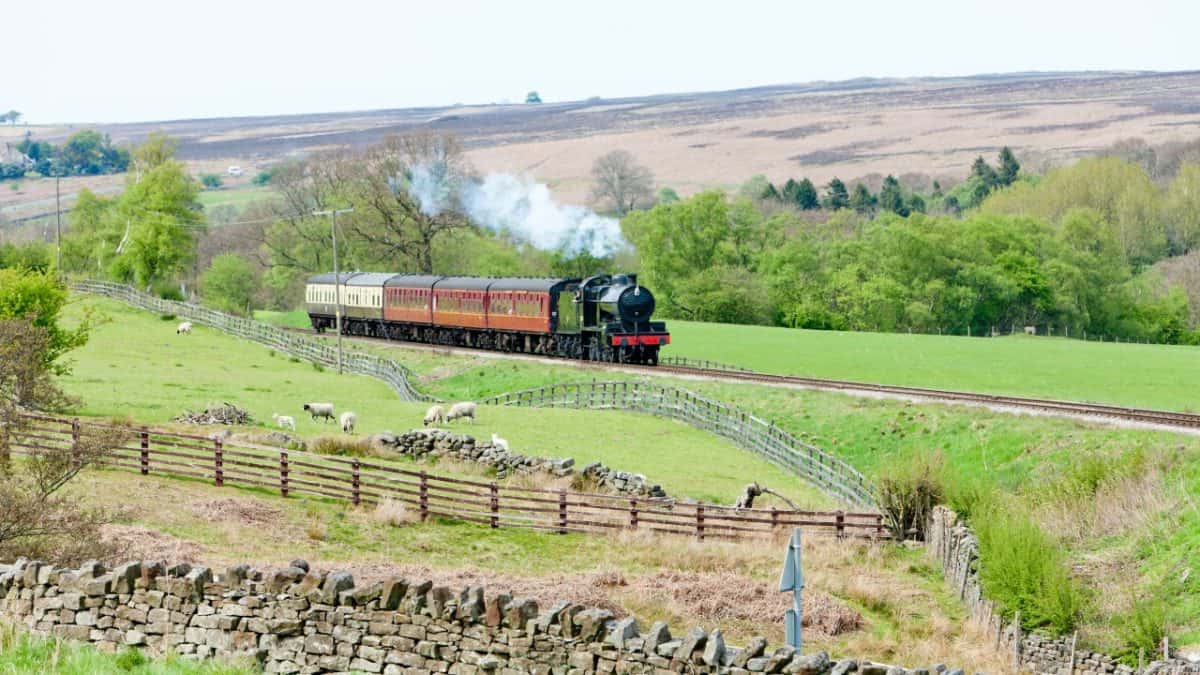
The average recommended walking time to complete the whole route is around nine days. Few people tackle it in under a week, and a fortnight would seem excessive. That said, it’s your walk – so take as long or as little as you please!
Think about what you’re motivated by. If it’s sites and sights, then take your time and enjoy rubbernecking along the way! If you’re more interested in the physical challenge, then plump for a quicker pace.
The record for running the trail sits at 19 hours and 53 minutes, set in 2017.
In terms of fitness, there are no real challenges here – the trail is bereft of any really difficult inclines. But what you should bear in mind is the hefty duration. Often, a long-distance walk can throw up issues you didn’t even realise you had, especially in your joints. Ankles, knees and hips can be the unexpecting victim of walks such as this.
You can mitigate this in a few ways – first of all, do your preparation. Do a couple of two-day or three-day walks to see how you manage. If you’re okay on those jaunts, you should be able to tackle the Cleveland Way.
You should also wear good shoes and carry good hiking poles – but more on that later!
When Is The Best Time To Do The Cleveland Way?
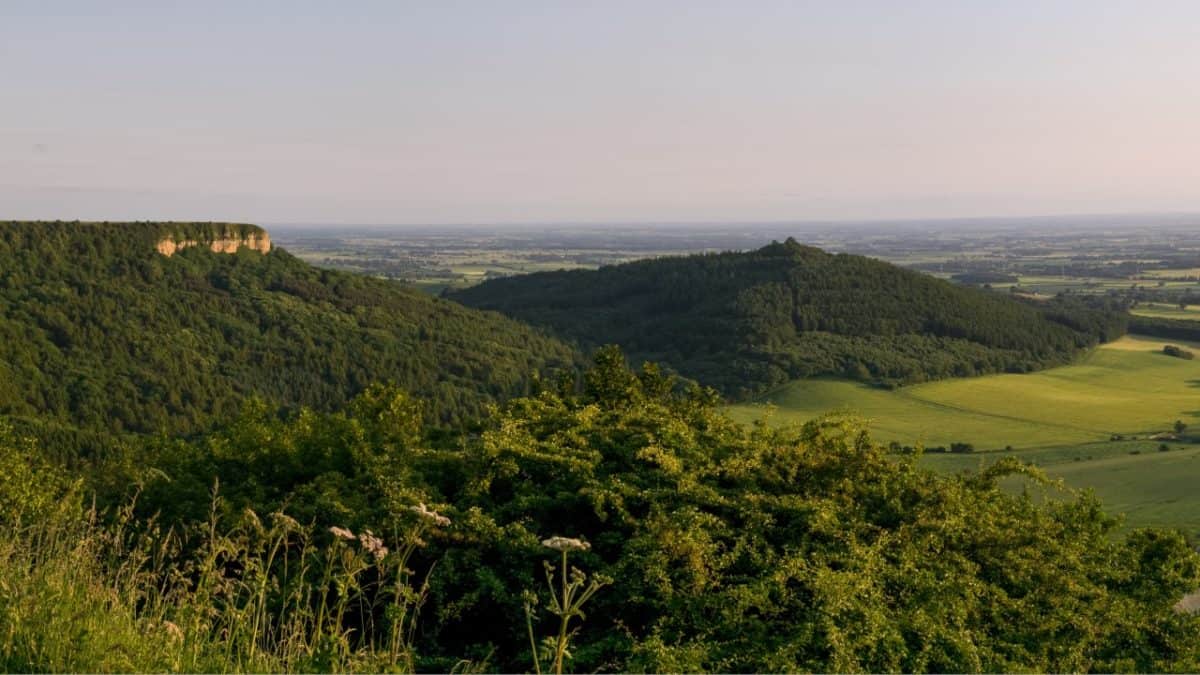
The terrain is reliable and the peaks aren’t too high, so the Cleveland Way is walkable at any time of year. If the weather is awful, then of course don’t set off, and be prepared for slightly unpleasant conditions if you trek in colder months, but colder climes won’t make this walk dangerous or unnavigable.
When planning the hike, consider whether you prefer to hike in cold climes or hot. Also consider the length of your days – do you want to make the most of your days by walking in the months with more daylight hours?
If you want to encounter the famous heathery moors, tackle the trek in August or September. Otherwise, the moors will be green rather than purple.
Another important consideration is crowds. The walk is of course more popular in warmer months. If you’re keen to avoid other people, you should avoid the summer – especially the summer holidays!
Is The Cleveland Way Well-Marked?
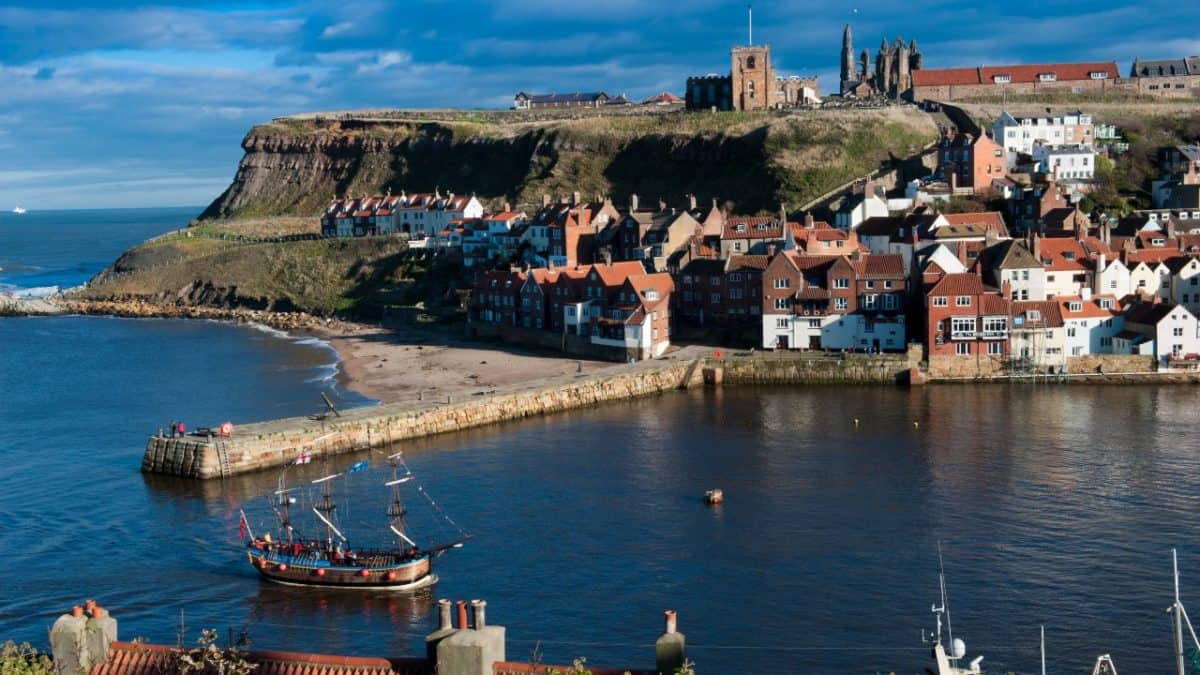
Yes. It’s very well-marked, so it’s almost impossible to get lost at any point. On the coastal section, you simply follow the coast, which makes navigation even easier!
When hiking, you should keep your eyes open for the standard National Trust acorn symbol, used to denote National Trail routes. The path is also marked by different coloured arrows as follows:
- Yellow: suitable for walkers
- Blue: suitable for walkers, horse riders and cyclists
- Plum: suitable for walkers, horse riders, cyclists and carriage drivers
- Red: suitable for walkers, horse riders, cyclists, carriage drivers and motorists
For this walk, there’s no need for a compass. You should carry a map or a guidebook to spot the sights along the way, but there’s no real need for any tools at all when it comes to navigation.
What Kit Do I Need For The Cleveland Way?
If you’re tackling the whole walk, you’re going to need a lot of equipment:
- Clothes. Make sure you pack light, but don’t take too little clothing. If you’re really keen to pack light, you should carry Merino Wool clothes, as they require much less washing in comparison to other hiking gear. You can even buy Merino Wool underwear and socks! Make sure you also carry waterproofs – and a hat.
- Good shoes are an absolute necessity. It’s also very important that you use shoes which you’ve broken in well. If you wear shoes you aren’t accustomed to (or that you’ve never worn before!), you’ll end up with blisters or sore feet – or both!
- Water bottles and purification tablets. For obvious reasons, you need a couple of good-quality refillable water bottles on your trek. And though it’s very unlikely you’ll ever need purification tablets on the Cleveland Way, it’s always good to be safe just in case disaster strikes. If you are looking for a new water bottle, check out our Hydro Flask vs Takeya bottle comparison.
- First aid kit. On most walks, you’ll probably require a little bit of medical care, even if it’s just a minor blister, sprain or cramp. Get yourself a high-quality first-aid kit and make sure it at least contains bandages, band aids, painkillers, sunscreen and rehydration sachets.
- Hiking poles. These are very important. Without them, you’ll put lots of unnecessary pressure on your joints, which can lead to injury – and a premature end to your walk.
- Food. Depending on whether or not you choose to camp along the trail, the amount of food you need will vary greatly. But however you’re sleeping, you’ll absolutely need some snacks. Carry low-weight calorie dense options – these will keep your belly full but your bag light.
- Camping equipment (optional). On this trek, like most other National Trails, you can either camp or stay in indoors accommodation. If you’re seeking the freedom of living out of a tent, it’s absolutely possible to camp throughout this trail – but it does mean you have much more weight to carry. If that’s the case, make sure that all of your camping equipment is lightweight, durable and reliable. Invest in quality equipment that won’t add loads of extra weight to your pack. It’s important to note here that wild camping is illegal in England. If you decide to wild camp, you do so at your own risk. Here are a few places to wild camp in Yorkshire.
Where Should I Sleep On The Cleveland Way? What Are My Accommodation Options?
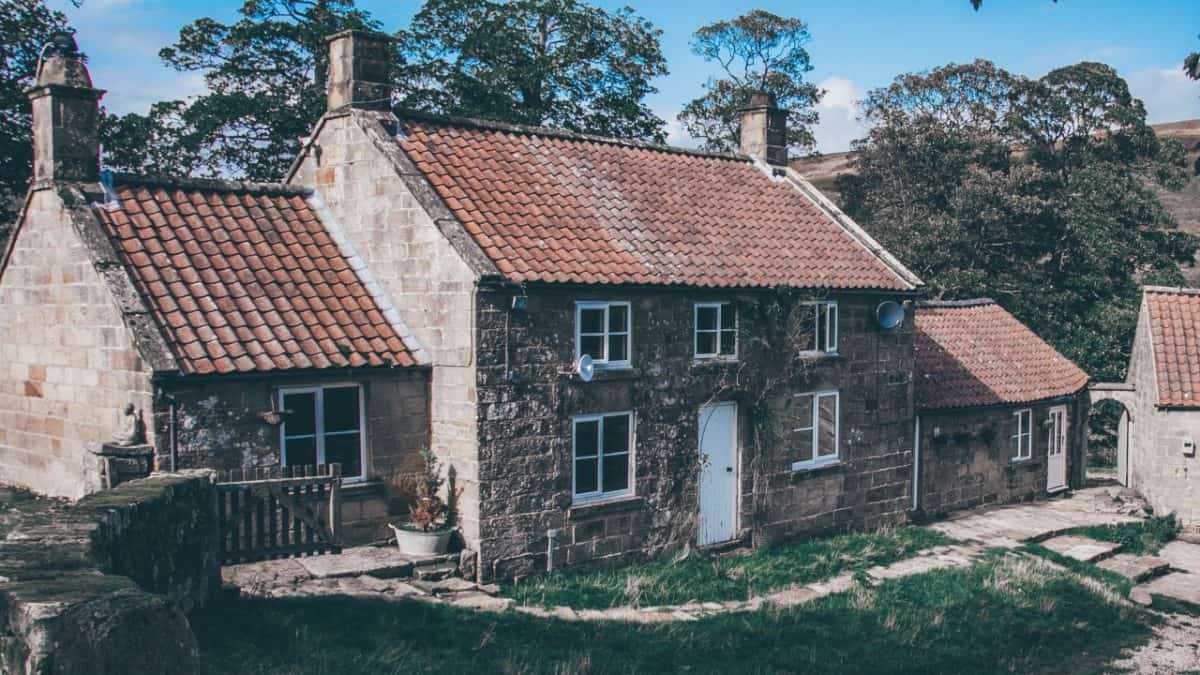
On this trail, the vast majority of hikers sleep in indoors accommodation en-route.
There are plenty of accommodation options, from bed and breakfasts to hotels; from hostels to pub rooms.
Here are some of the best accommodation options you’ll find on the Cleveland Way:
- Stilworth House, Helmsley (http://www.stilworth.co.uk/). Quaint and charming, this Georgian townhouse offers proper hospitality and a beautiful location. A fantastic bed and breakfast, it’s cosy, comfy and offers a great place to put your feet up before you kick off on your walk.
- High Paradise Farm, Boltby (http://www.highparadise.co.uk/). A remote moorland farmhouse right on the trail, this place is beautiful. For a real insight into farm life, stay here – you can either sleep in the holiday cottage or pitch up a tent. There’s even a hot tub! This place really is great for an overnight stay.
- Lordstones Country Park, Carlton Bank (https://lordstones.com/). Camping and glamping right in the heart of a stunning landscape, this is a real rural retreat for a quiet mid-walk overnighter. The site also has a cafe, a restaurant and a shop, making it a perfect one-stop haven. Your options here are yurts, tents and camping pods. Lordstones is a real gem.
- The Spa Hotel, Saltburn (https://thespahotelsaltburn.co.uk/). Panoramic coastal views don’t get much better than the ones offered from the rooms of this hotel. The halfway point of any walk justifies indulging in a little bit of decadence, which is what you can get here for a reasonable fee.
- Endeavour Restaurant with Rooms, Staithes (http://www.endeavour-restaurant.co.uk/). A tiny little place tucked away in a glorious location, this pop up restaurant offers a lovely bed and breakfast experience in a very unassuming style.
- YHA Boggle Hole, Robin Hood’s Bay (https://www.yha.org.uk/hostel/yha-boggle-hole). The affordable refuge of hikers everywhere, this YHA offers your standard hostel welcome in a fantastic location. A really cosy little place, this hostel is always stuffed to the brim with other ramblers, the perfect place to make some hiking pals. Scarborough also has a great YHA for those keen to sleep on a budget.
- White Lodge Hotel, Filey (https://www.whitelodgehotelfiley.co.uk/). A great place to end your walk, this hotel offers a fair amount of luxury at a reasonable price. The rooms offer great coastal views and the food is fantastic.
Are There Places To Eat And Drink Along The Cleveland Way?

Yes, there are plenty. Along the trail you’ll encounter plenty of pubs, restaurants and other eateries. This hike isn’t as remote as some of the other National Trails, so you don’t have to worry too much about getting stranded without food or drink.
In spite of that, you should still carry plenty of snacks. Before you set off, make sure you have plenty of sustenance to get you by. And if you ever run short, make sure you stock up next time you reach a shop. Carry calorie-dense foods such as nuts, seeds and flapjacks, along with fruit. Though you’ll never find yourself in trouble, walking on an empty stomach is never fun.
As with any British walk, the Cleveland Way is a great way to get in touch with local life (and local food!). You’ll find great grub in the pubs and restaurants along the way. Make sure you indulge in plenty of good food and drink – and make sure you pop into plenty of pubs! Pubs in this part of the world are fantastic, full of warm welcomes and traditional beer.
The Cleveland Way is a great hike for walkers of any description. If you’re fairly fit and accustomed to walking, you’ll love this. It’s not too challenging in terms of length or technicality, making it very accessible.
The North Yorkshire Moors National Park is an incredible part of the UK. And this is the best way to experience it. By circumventing almost its entirety, you can enjoy the highlights of the park along with its vast diversity. The shape of the route also allows you to experience a great deal of a concentrated area of the country, which is an appealing aspect of the walk. While most National Trails are linear, this one is closer to a loop.
Yet another incredible National Trail, it’s an unmissable adventure!
Other long-distance hiking trails in England and Wales:
- The South Downs Way Guide
- The Thames River Path Guide
- The Hadrian’s Wall Path Guide
- The Pennine Way Guide
- The Cotswold Way Guide

I love hiking, backpacking, and camping. From the Camino de Santiago to the West Highland Way in Scotland or simply a great day hike on the weekend. Hiking refreshes me, my mind, and keeps my body reasonably fit. So far I have walked three Camino routes and many other long distance hikes in the UK, Canada, and around the rest of Europe. One of the best was my hike up Ben Nevis.

